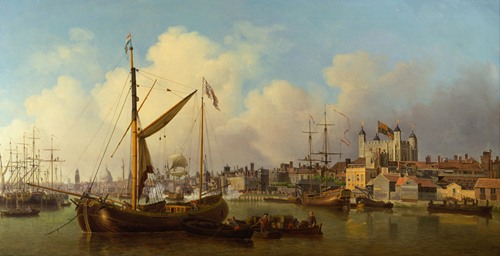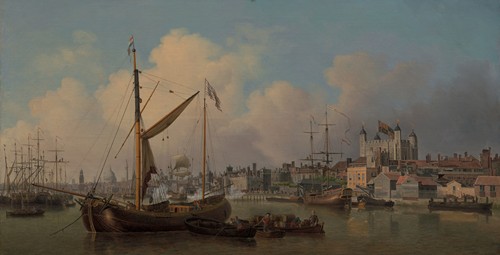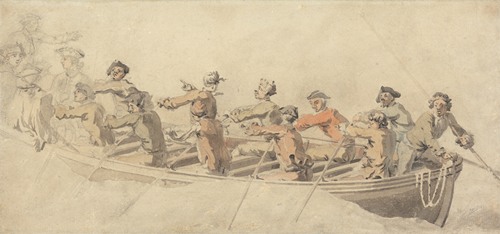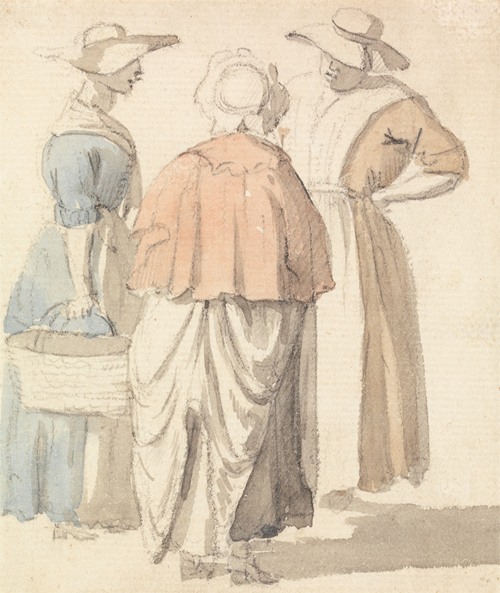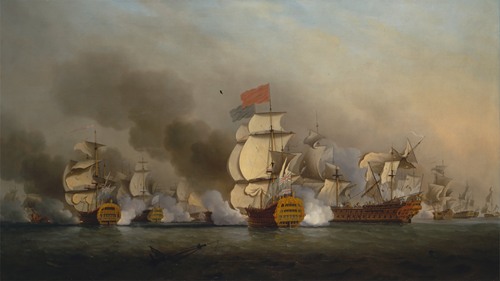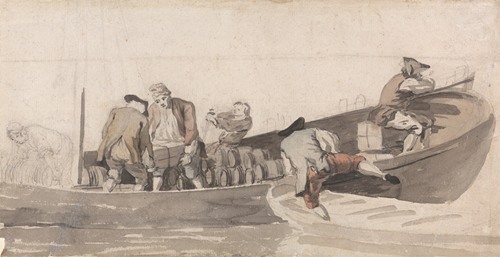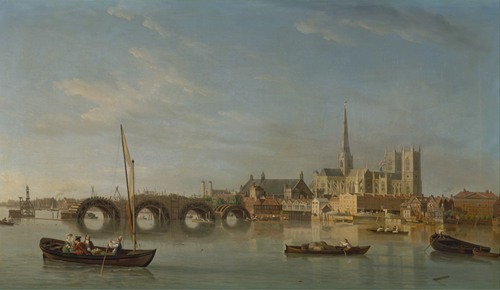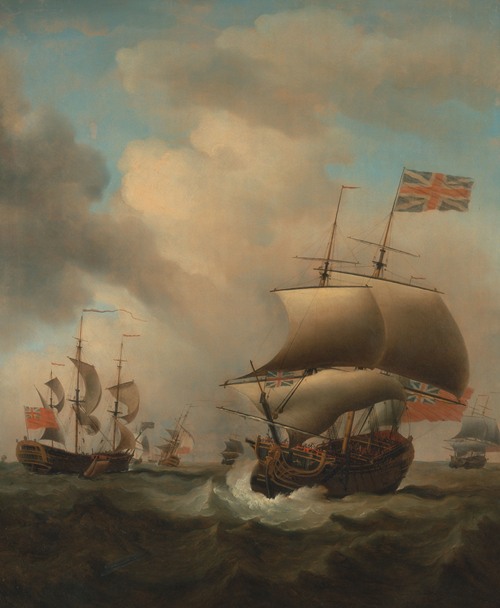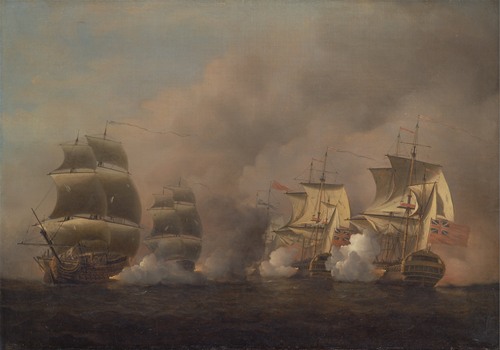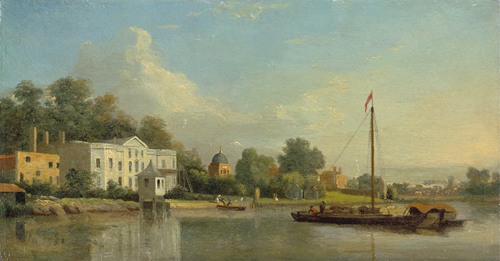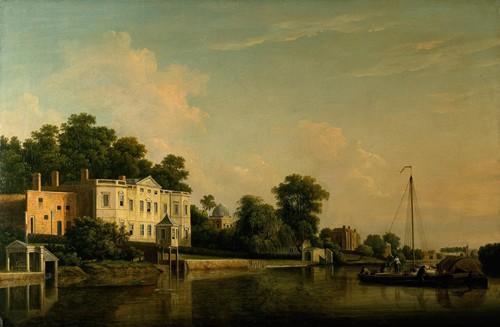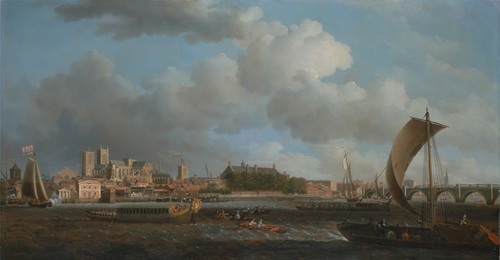
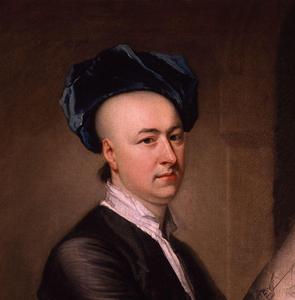
Samuel Scott was a British landscape painter known for his riverside scenes and seascapes.
Scott was born in London, and began painting in around 1720, Nothing is known of his artistic training. He started as a maritime artist, painting men-of-war and other ships on calm seas in the style of Willem van de Velde, many of whose drawings he owned. He also painted a set of six pictures of settlements owned by the East India Company in collaboration with George Lambert. Scott painted the ships, Lambert the buildings and landscape. Writing in 1733, George Vertue included Scott among London's "most elevated men in art".
From 27–31 May 1732 he made a celebrated "Five days' Peregrination" to the Isle of Sheppey in company with William Hogarth and others. An account of their trip was written by Ebenezer Forrest and published in 1782, illustrated with drawings by Hogarth and Scott.
In the early 1740s, Scott began making sketches of London, especially of the new Westminster Bridge, then under construction, When, following the arrival of Canaletto in London in 1746, paintings of views of the city became fashionable, he began working the sketches up into oil paintings. He painted at least eleven versions of a view of Old London Bridge, the earliest dating from 1747. Scott continued to paint copies of it after 1757, when the houses lining the bridge, shown in the painting had been demolished. The London Bridge pictures were often painted as one of a pair, with an image of the Tower of London or Westminster Bridge as a pendant.
More Artworks by Samuel Scott (View all 31 Artworks)
